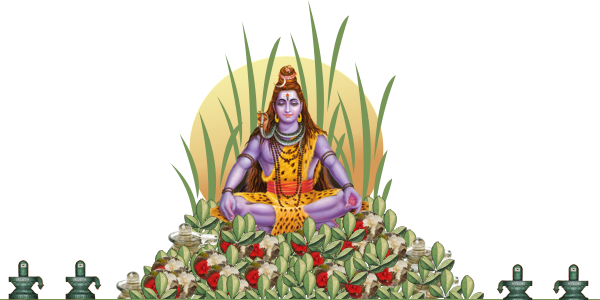Contents
In the traditions of Ancient India, worshipping Divinity included worshipping of certain Trees and Plants. The Bael / Bilva Tree, Scientific Name – Aegle Mermelos, English Name – Golden Apple/ Stone Apple, has been associated with Lord Shiva. Lord Shiva has offered its Leaves and Fruits. The trifoliate Leaves from the Bael Tree are auspicious, symbolizing Lord Vishnu, Lord Brahma, and Lord Shiva.

In the traditions of Ancient India, worshipping Divinity included worshipping of certain Trees and Plants. The Bael / Bilva Tree, Scientific Name – Aegle Mermelos, English Name – Golden Apple/ Stone Apple, has been associated with Lord Shiva. Lord Shiva has offered its Leaves and Fruits. The trifoliate Leaves from the Bael Tree are auspicious, symbolizing Lord Vishnu, Lord Brahma, and Lord Shiva. The trifoliate Leaves have also been considered as the Three Eyes of Lord Shiva.
References in Scriptures
It is mentioned in the Shiva Purana, which is the great epic on Shiva, the Bael / Bilva Tree has been considered as the manifested form of Shiva Himself. It is also considered that all the great tirthas (pilgrimage places) reside in the base of the Bael Tree. One who worships the Shiva Linga under the Bael / Bilva Tree is said to attain the highest bliss of oneness with Shiva.
There are also legends that once Shiva and Parvati were dancing (Anand Tandav) and their sweat fell on Mount Mandara where a sapling began to sprout after few months. After a few years there was a Tree. When Parvati was informed about this and came to see, She announced ‘Indeed it is Holy Plant by each stem having Three Leaves’.
Medicinal Aspects
All parts of the Bael Tree contain medicinal qualities as practiced in Ayurveda.
Root – The medicine prepared from the root, mixed with ginger and toasted rice cures vomiting. Medicine prepared with root and another tuberous root is the treatment of piles, dysentery and diarrhoea. The extracted oil is boiled with the juice of Leaves and when applied to the head is excellent for nasal catarrh and diseases of the ear.
Fruit – the pale tawny flesh of the fruit is sweet and astringent, with agreeable aromatic flavour, which contains tannin, and acts as an astringent for the bowels and is an excellent dietary supplement. The pulp of the Fruit, when powdered and mixed with arrowroot, is referred to as ‘dietetic Bel’, and is a sustaining food as well as a curative medicine.
Leaves – Consuming Bael / Bilva Leaves alleviates diseases caused by excess vata and kapha (mucus). The Leaves are also helpful for curing diabetes mellitus, where a few Leaves should be chewed daily and their fresh juice drunk. The Leaves are diaphoretic (producing more perspiration), is able to reduce temperature and lower fever, and is also an aphrodisiac. A decoction of the Bael/Bilva Leaves is a renowned remedy for ailments which often occur during seasonal changes, such as the fever, flu and fatigue.
Planting a Bael / Bilva Tree
A Bael / Bilva Tree Sapling should be tenderly nurtured and protected until reaching of a certain height for transplanting, and should be tended to like a fragile baby until the Tree grows up sufficiently.
There are organisations like Astroved.com who allows visitors to sponsor sapling of Bael/Bilva Tree, to be cared for at the Tripura Foundation’s charity project ‘HoPE Town’.


